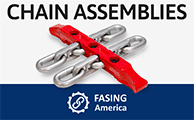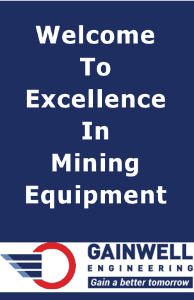
 










|
Signature Sponsor


October 3, 2024 - From the heavy equipment manufacturers with their monstrous mining machines inside the Las Vegas Convention Center to the mining companies kicking the tires of those machines, transitioning to the zero-emissions mines of tomorrow was a topic that commanded center stage at MINExpo 2024. While the overarching climate goals of the mining sector remain much the same as they were during MINExpo 2021, the realities and complexities associated with transitioning an energy-intensive sector of the global economy away from liquid energy delivered via diesel to the zero-emission mines of the future have come into clear focus. The reality is that mining's transition to zero carbon emissions is exactly that – a transition. There was no single technology, or even combination of technologies, available across the more than 800,000 square feet of exhibit space at the world's largest mining event that will allow mining companies to flip a switch from the diesel that has fueled the industry for a century to the electric. "Not everyone is ready to go full battery-electric in their mine sites today," Caterpillar Group President Denise Johnson said during a Sept. 24 fireside chat to kick off MINExpo 2024. Johnson's words were echoed by heavy equipment manufacturers, mining companies, and service and technology providers representing the industry's entire spectrum during the three-day event in Las Vegas. Glenn Kerkoff, the global principal of mining, metals, and minerals at AVEVA, told North of 60 Mining News that mining's transition to zero CO2 emissions is further complicated by the increasing amount of energy it takes to produce a pound of metal due to the need to mine deeper and lower-grade deposits. "We see that as a journey – obviously, there are a lot of things that need to happen along the way – and a big part of that is energy management," he said. Companies like AVEVA, a global leader in industrial software driving digital transformation and sustainability, are working with mining companies to understand what their current energy mix is and help them map out a path to net-zero emissions over the coming decades. "It's a complicated topic, and three years ago, we were just starting," Kerkhoff said. "Now, everybody is trying to understand 'how do we get there?'" Every mine is a little differentOne thing that has come into clearer focus over the three years since MINExpo 2021 is that each mining operation has its own unique set of energy transition challenges and opportunities. "Every site is a little bit different in terms of their energy profile, access to green energy, adequacy of energy capacity, and how they are going to manage that added power need on their site as they decarbonize the fleet," Thad Litkenhus, director of product management and electrification at Caterpillar, told North of 60 Mining News. For example, the energy ecosystem of a new mine that can be plugged into an electrical grid fed by clean energy will look much different from that of a well-established mine in a remote location, especially in locales with limited renewable energy options. Even for a mining company that aspires to go fully electric on day one at a new mine with plentiful grid-delivered hydroelectricity to power that aspiration, the battery-powered mining equipment and charging technology is still in its earliest stages of development. So far, there is not a single completely electric surface mine in operation, and the first one will likely be at Nouveau Monde Graphite Inc.'s Matawinie project in Quebec, which is expected to serve as a case study for zero-carbon mining. Wanting to leverage an abundance of hydropower available on the electrical grid to produce clean graphite for lithium-ion batteries going in electric vehicles, Nouveau Monde signed a deal with Caterpillar in 2021 to equip the Matawinie Mine with a zero-emission mining fleet and associated charging infrastructure. "We are excited to move one step closer to building the mine of the future, powered by clean energy to responsibly extract and produce a critical mineral for global decarbonization," Nouveau Monde Graphite Eric Desaulniers said during a Sept. 20 announcement that it awarded ABB a contract to install an electrical substation to plug Matawinie into Quebec's clean power grid. For Caterpillar, the Matawinie Mine serves as an ideal scenario for developing and demonstrating the battery-powered mining equipment and charging infrastructure of the zero-emissions mine of the future. The equipment manufacturer, however, also realizes that Matawinie is the exception and not the rule when it comes to lowering mining's carbon footprint. "Bringing renewables to a site is a big challenge and then standing up that site with renewable energy and then being able to distribute the power," Johnson said during the fireside chat hosted by JP Morgan. These challenges loom especially large for remote mines with limited zero-carbon energy options, such as arctic mines located well beyond the reaches of any electrical grid and where solar is not a viable year-round option. Even if zero-emissions energy is available, fully electrifying a mine that has hundreds of millions of dollars invested into diesel equipment and fueling infrastructure may not be financially or technically feasible. "I think mining companies have recognized that the problem to solve is not getting new equipment into a site, it is getting an entire site operating in a new ecosystem," said Johnson. The mining machines on display at MINExpo 2024 demonstrate that heavy equipment manufacturers remain committed to developing and perfecting their battery-electric earthmoving offerings, but their strategies have shifted to more practical solutions that are adaptable to both the maturing of zero-carbon power technologies and the varying needs of mining customers with corporate goals to minimize the amount of CO2 emitted per pound of metal produced. Power-agnostic equipmentWith material haulage being the largest source of carbon emissions at many mines, equipment manufacturers have focused much of their efforts on the development of lower-emissions haul trucks that meet the needs of both current and future mines. "We have developed a new strategy, where we can take a diesel-electric truck and couple that with a lot of the infrastructure that will be required for the future to take current emissions down by up to 60%," Johnson explained. This power-agnostic strategy is something Komatsu was already leaning toward during MINExpo 2021. The basic idea of power-agnostic mining equipment is that multiple power systems, such as diesel-electric, battery-electric, or hydrogen, can be plugged into and power electric-drive and hydraulic systems on any given piece of equipment. With all of the rest of the electric drive equipment being the same, any one of these power modules could be installed or even swapped as the power supply needs an operation change. During MINExpo 2024, Komatsu unveiled its Power Agnostic 930E, a 290-metric-ton haul truck that empowers mining companies to make strategic investments in equipment that delivers strong diesel performance today and supports long-term sustainability by transitioning toward zero emissions. "This truck represents a key component of our decarbonization strategy and will provide customers operational flexibility in reaching their sustainability goals when the opportunity is right for them," said Komatsu Senior Vice President of Surface Haulage Dan Funcannon. Caterpillar's strategy is much the same. "No matter the powertrain you desire, we will have a solution," said Johnson. "Our large mining trucks are engineered to integrate with the technologies of today and of the future." It is expected that the same power-agnostic systems will be adapted to dozers, loaders, excavators, and other mining equipment. Dynamic energy transferA key aspect of mining's energy transition journey is how to deliver energy to electric-drive equipment without losing productivity. For more than a century, this problem was met with a liquified energy source that could be pumped into a fuel tank within a few minutes and would sustain a piece of equipment for a 12-hour shift. Charging a battery, however, could take a couple of hours. This means either a loss of productivity or increasing the mining fleet to make up for the time that some equipment is idle at the charger. With neither of these scenarios being ideal, manufacturers are looking into electrifying solutions for powering mining equipment on the go that can be plugged into current mine-site ecosystems. One such solution is the Cat Dynamic Energy Transfer (DET), a system unveiled at MINExpo 2024 that can deliver energy to both diesel-electric and battery-electric mining trucks while they are working. "Our team of innovators designed this system to provide immediate benefit to miners who want to lower their operating costs and greenhouse gas emissions today while also creating flexibility for the future," said Johnson. The Cat DET has three primary parts – a power module that converts energy from a mine site's power source, an electrified rail system to transmit the energy, and a machine system to transfer electricity to the truck's powertrain. Caterpillar says this dynamic charging system can be installed at already operational mines that are adding electric-drive models to its fleet, as well as new mines coming online during the energy transition. While more traditional overhead trolley-assist systems are capable of simultaneously towing a haul truck up inclines and delivering a charge, Caterpillar says the Cat DET system offers several advantages. Overhead trolleys can be fairly capital-intensive to install, only work on straight stretches of the haul route, and are fixed systems typically designed to work with a certain size of truck. To meet the changing needs as mines mature and mining fleets change, Caterpillar has designed the rail system to be highly deployable and customizable to mine site layouts, including high-speed and curved haul roads, enabling higher productivity. Litkenhus said a kilometer of the Cat DET rail can be moved in a matter of days, making it highly adaptable to a mining operation's evolving needs. While Cat DET does not provide trucks with a tow up steep inclines, the system can deliver electricity directly to electric drive motors, which enables both battery-electric and diesel-electric trucks to climb slopes faster without expending their onboard energy. "We are proud to deliver an innovative, integrated solution that can support the needs of today and those of the future," said Johnson. |
 











|



